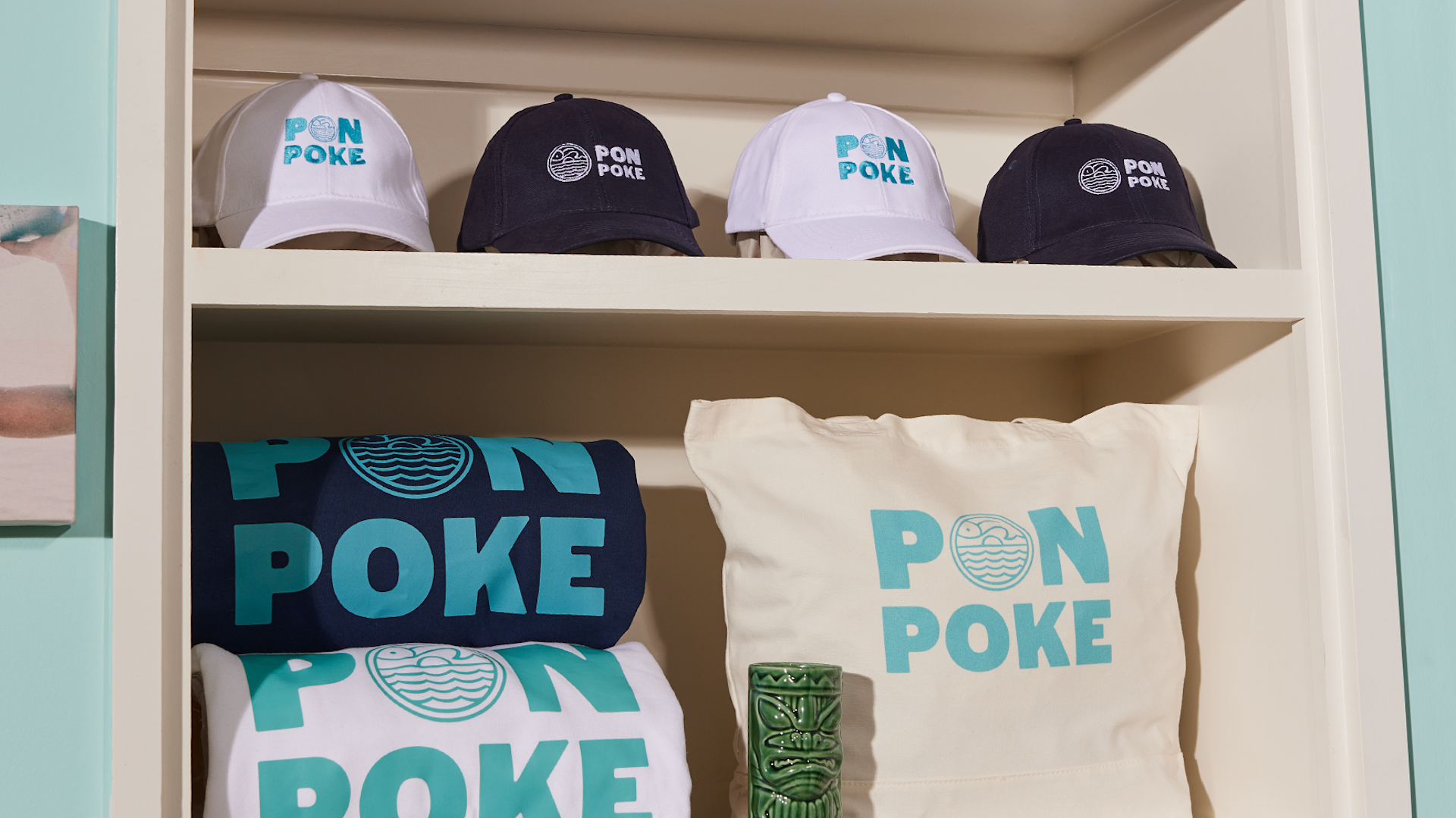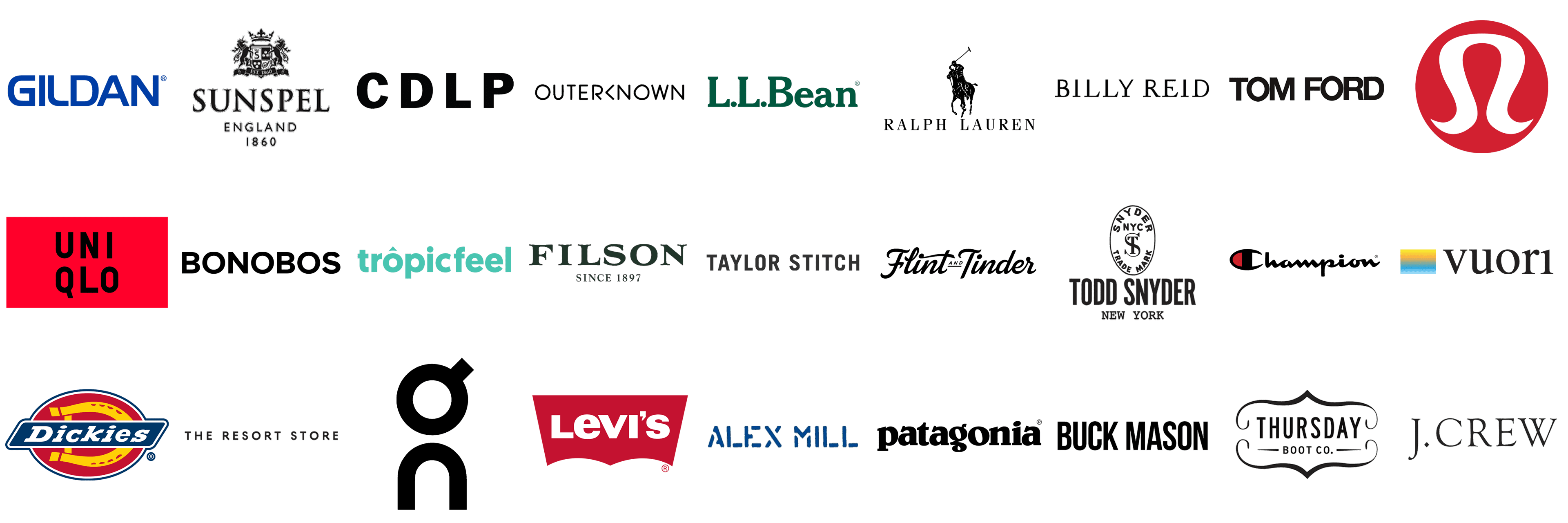How Branded Clothing Combines Fit, Function, and Fabric Innovation
The Importance of Sustainable Garments: Exactly How It Influences the Atmosphere and Your Closet
Sustainable garments is significantly identified for its vital role in decreasing the environmental influence of the quick apparel industry. By concentrating on eco-friendly materials and moral production approaches, it addresses pushing environmental concerns. This change not just profits the earth however likewise influences customer choices, resulting in a much more thoughtful strategy to wardrobe administration. Recognizing these dynamics increases vital inquiries about style's future and individual duty in forming it.
The Ecological Impact of Fast Fashion

Benefits of Sustainable Products
Lasting products offer substantial advantages, especially through environmentally friendly fabric selections that lessen environmental harm. These products likewise show toughness and durability, decreasing the demand for frequent substitutes. Therefore, they add to a more sustainable fashion business and advertise liable consumer habits.
Eco-Friendly Textile Options
While the garment industry has long been related to quick patterns and environmental damage, the rise of green material selections presents a transformative opportunity. Lasting materials such as organic cotton, hemp, and Tencel have actually gained popularity because of their reduced environmental effect. These textiles are usually generated without damaging chemicals and call for much less water, reducing their carbon impact - Branded Clothing. Furthermore, lots of green textiles are biodegradable, adding to a round economic situation by minimizing waste. Picking lasting materials not just supports eco liable practices however additionally promotes much healthier communities. As consumers become a lot more familiar with their purchasing power, the need for eco-friendly fabrics motivates brand names to innovate and embrace more sustainable production approaches, ultimately profiting the planet and future generations
Durability and Durability Advantages
Several consumers are increasingly recognizing the longevity and longevity advantages of sustainable products in their clothing choices. Unlike standard fabrics, sustainable products such as organic cotton, hemp, and recycled polyester are engineered to withstand wear and tear, leading to garments that last much longer. This decreased regularity of substitute not just conserves customers money with time but additionally diminishes waste created by fast style. Furthermore, lasting apparel usually employs environment-friendly manufacturing techniques that improve textile stamina, adding to a decrease in the total carbon footprint. By investing in durable apparel, consumers can grow an extra sustainable wardrobe while appreciating top quality pieces that preserve their aesthetic and capability gradually. As a result, longevity and long life stand as essential advantages of selecting lasting products.
Minimizing Waste Through Lasting Practices
Minimizing waste in the garment industry can be attained via innovative practices such as upcycling and repurposing products. Additionally, embracing minimal closet methods motivates customers to prioritize top quality over amount, inevitably reducing apparel intake. With each other, these strategies contribute significantly to a much more sustainable clothes version.
Upcycling and Repurposing Products
Upcycling and repurposing materials have become ingenious approaches in the style industry, transforming discarded fabrics into beneficial brand-new items. This approach not only decreases waste however also encourages creativity and uniqueness in clothes layout. By taking old garments and products, designers can develop unique pieces that show personal style while minimizing the need for brand-new sources. Additionally, upcycling frequently calls for less energy and water contrasted to typical production processes, considerably reducing the ecological footprint of style. As customers come to be a lot more knowledgeable about sustainability, the popularity of upcycled apparel remains to increase, advertising a circular economic situation. Ultimately, these practices add to an extra lasting future, where fashion focuses on environmental wellness over fast manufacturing and usage.

Minimal Closet Strategies
As individuals progressively look for to lessen their environmental effect, adopting minimal closet methods has obtained grip as an efficient method to sustainable style. These strategies stress top quality over amount, motivating consumers to curate a smaller sized collection of flexible, durable clothes. By concentrating on ageless pieces that can be mixed and matched, individuals can lower the frequency of acquisitions and eventually reduce waste.Additionally, minimalism promotes mindful intake, advising customers to assess the environmental and ethical implications of their options. This method not only promotes a much more lasting way of life yet additionally simplifies day-to-day decision-making regarding clothes. As people welcome minimal concepts, they add to a style society that values sustainability and liable consumerism, inevitably resulting in a more eco-conscious society.
The Function of Ethical Labor in Lasting Fashion
While many consumers are increasingly knowledgeable about the environmental consequences of their garments choices, the importance of honest labor practices in sustainable style can not be overlooked. Honest labor incorporates reasonable wages, secure working conditions, and respect for workers' civil liberties, creating the backbone of liable style production. Brands that prioritize honest labor not only boost areas yet also established a requirement for accountability in the industry.Moreover, the assimilation of moral practices cultivates openness, making it possible for customers to make educated options about their purchases. This method contrasts dramatically with quick fashion's unscrupulous labor models, which typically prioritize earnings over individuals. By supporting companies devoted to moral labor, customers contribute to a system that values human self-respect alongside ecological sustainability. Honest labor is not merely an add-on; it is important to the wider objective of sustainable style, making certain that the pursuit for eco-friendliness does not come at the cost of human civil liberties.
The Effect of Lasting Apparel on Carbon Emissions
Sustainable clothes has the prospective to significantly minimize carbon discharges associated with the garment industry. Traditional garment manufacturing adds significantly to greenhouse gas emissions, primarily because of energy-intensive production procedures and the usage of non-renewable resources. On the other hand, sustainable style concentrates on environmentally friendly materials, such as organic cotton or recycled fibers, which typically require less power to produce.Moreover, lasting brands often tend to embrace more efficient manufacturing practices, reducing waste and decreasing overall emissions. By focusing on resilience and timeless design, lasting apparel urges consumers to get less regularly, additional minimizing the carbon footprint related to overconsumption.Additionally, numerous lasting brands are committed to openness in their supply chains, enabling consumers to make educated choices that align with their values. Inevitably, moving in the direction of lasting clothes can bring about a significant reduction in carbon exhausts, adding to a healthier world and a more sustainable future for the style sector.
Supporting Local Economic Climates With Lasting Options
The change toward sustainable clothing not just addresses environmental worries but also significantly benefits neighborhood economic situations. By picking sustainable fashion, customers commonly support little services and local craftsmens, enhancing community strength. These business normally operate a smaller sized range, prioritizing craftsmanship and ethical practices over mass production.Investing in locally made lasting clothing promotes job production and stimulates financial development within communities. As consumers come to be much more knowledgeable about the ecological effect of their purchases, they progressively look for products that mirror their values. This demand urges regional suppliers to take on sustainable methods, adding to a round economy.Moreover, supporting regional businesses decreases transportation emissions, lining up with eco-conscious consumer habits. The interconnectedness of sustainable apparel and neighborhood economic climates official source underscores the vital function that private choices play in promoting both economic and ecological health. By promoting these local links, neighborhoods can grow while likewise functioning in the direction of an extra sustainable future.
Changing Your Closet: Tips for a Sustainable Closet
As people seek to lower their ecological effect, transforming a wardrobe into a lasting wardrobe becomes a crucial action. One effective strategy is to review existing apparel, maintaining just things that are worn regularly which line up with sustainability goals. Prioritizing quality over amount is essential; purchasing long lasting items from environment-friendly brands can significantly minimize waste.Additionally, including used items can rejuvenate a closet while reducing environmental damages. Organizing garments swaps with pals or donating extra items can better advertise sustainability.When purchasing, people must seek materials that are organic, recycled, or eco-friendly, and prevent quick fashion retailers - Branded Clothing. Finally, practicing conscious consumption by attentively considering each purchase can add to a much more sustainable way of living. By implementing these pointers, one can produce a closet that reflects personal design while sustaining ecological stewardship
Regularly Asked Questions
How Can I Recognize Lasting Clothing Brands?
To recognize lasting clothing brands, one must research products made use of, look for certifications like Fair Profession, and analyze the brand name's transparency regarding their manufacturing procedures, labor practices, and ecological influence, ensuring moral and environmentally friendly practices are prioritized.
What Are the Costs Related To Lasting Style?
The expenses connected with lasting fashion can vary considerably. Higher production expenditures, moral sourcing, and green products commonly look what i found result in enhanced retail prices, which may hinder some customers while interesting ecologically mindful shoppers.
Can Lasting Garments Be Trendy and trendy?
Lasting garments can undoubtedly be elegant and trendy. Developers increasingly prioritize innovative products and moral production techniques, proving that fashion and sustainability can exist side-by-side. Customers currently have diverse alternatives that blend aesthetic appeals with environmental awareness.
How Does Laundering Clothing Affect Their Sustainability?
Washing garments substantially impacts sustainability by consuming water and power, adding to contamination, and triggering microplastic release. Regular washing can weaken materials, reducing their lifespan and enhancing the requirement for substitutes, ultimately intensifying environmental concerns.
What Is the Life-span of Lasting Garments Contrasted to Quick Fashion?
The life-span of sustainable apparel normally surpasses that of quick fashion things, often lasting a number of years as a result of top quality materials and workmanship. In comparison, rapid style garments may weaken rapidly, necessitating even more frequent replacements. Sustainable garments is progressively identified for its vital function in decreasing the ecological effect of the quick fashion sector. While several customers are increasingly mindful of the environmental repercussions of their clothes choices, the relevance of honest labor practices in lasting style can not be neglected. Branded Clothing. Lasting clothing has the possible to substantially web link reduce carbon emissions linked with the style market. In comparison, lasting style focuses on environment-friendly materials, such as natural cotton or recycled fibers, which frequently require less energy to produce.Moreover, sustainable brands have a tendency to take on extra efficient production practices, reducing waste and reducing total discharges. By prioritizing sturdiness and timeless layout, sustainable clothes motivates consumers to acquire much less regularly, additional decreasing the carbon impact connected with overconsumption.Additionally, several lasting brands are dedicated to transparency in their supply chains, making it possible for consumers to make informed options that line up with their values